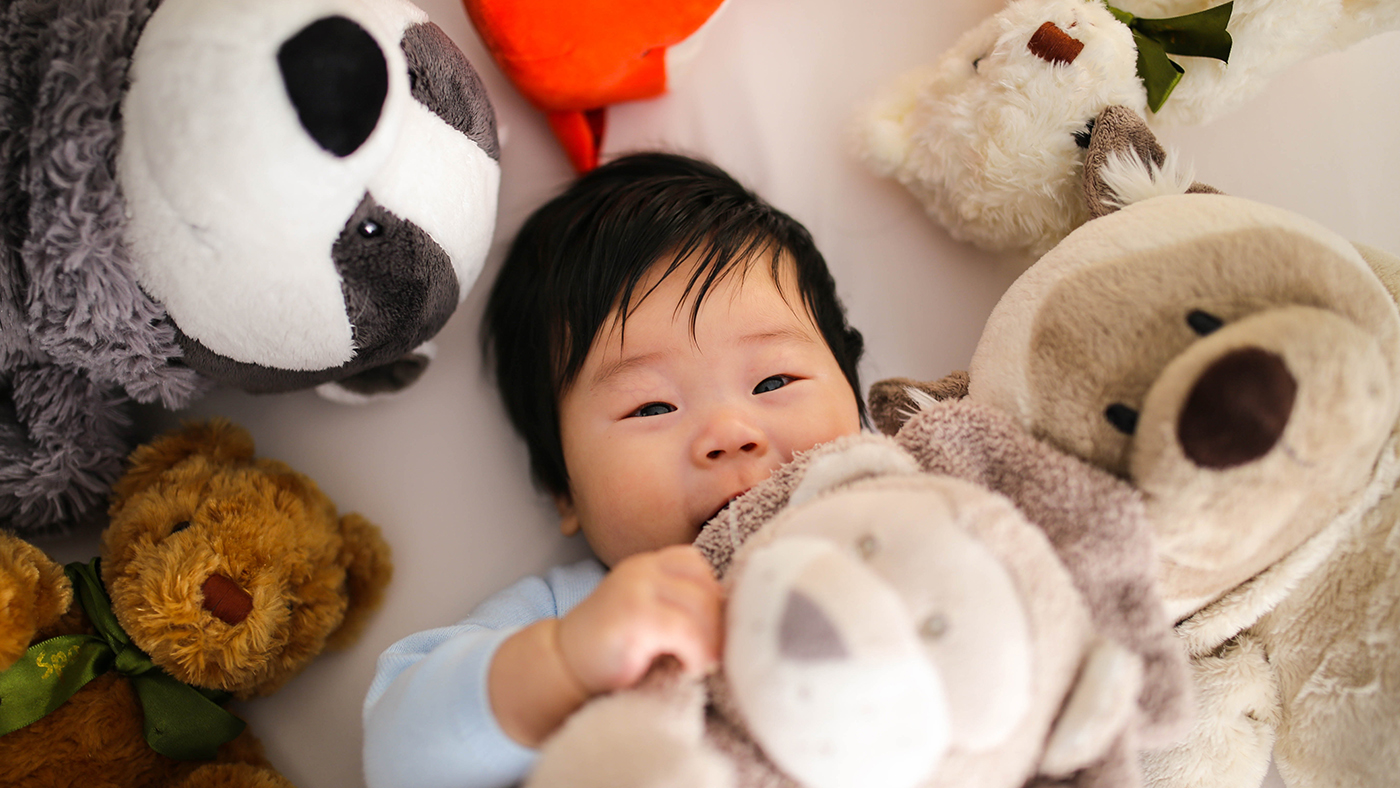Moving with purpose!

You'll have noticed your baby moving their arms and legs in a random, jerky way, then, as their muscles and control developed, seen these movements becoming smoother and seeming more controlled. Now, you will notice that your baby is starting to move with a particular purpose in mind, perhaps moving their arm towards a toy, or moving in excitement when you are close to them.
Movement and your baby’s brain
Your baby’s brain started to develop before birth and will develop rapidly during the first years of their life. Your baby will make and strengthen connections in their brain as a result of their experiences, as repetition of experiences strengthens connections.[1]
Your baby’s movements not only strengthen their muscles but also stimulate the areas of the brain linked to movement. Repeating movements will strengthen the connections in these areas of the brain, and so moving supports your baby’s brain development.
Moving and cognitive development
Moving more purposefully, perhaps moving their arm towards their face or towards an object, involves not just being able to control movement, but also being able to think about what movement is needed.
As your baby moves, they might sometimes touch a toy or their face. While they might not have controlled the movement in order to touch their face or an object, they will begin to connect what they see and feel with their movements. As their control of their muscles develops, they will use this understanding to move with more control and for a particular purpose.
When your baby can control their movements they will be able to reach objects, hold them and move them, and in doing so learn more about these objects and about the world.
Time to explore
You can help your baby to develop control of their movements by making sure they have time to move, and thinking about things that might make it more difficult for them to move. You could consider:
- Time spent in ‘containers’. Give your baby time playing on the floor or your lap and try to limit time spent in car seats or chairs that might limit their movement.
- Clothing – think about their clothing: could it limit their movement? Tight and stiff clothes might prevent your baby from moving freely.
- Hands and feet – make sure that your baby has some time with their hands and feet uncovered so that they can feel as they touch things when they kick their legs or move their arms.
Let the exploration continue!
Your baby will continue to develop strength and control of their movements; soon they will be able to put their hands and other objects in their mouth so that they can find out more about them. They will be able to move their arm while holding an object and notice what happens, then they will be able to reach and grasp an object.
References:
[1] Conkbayir, M. (2017) Early Childhood and Neuroscience. Theory, Research and Implications for Practice. London: Bloomsbury.